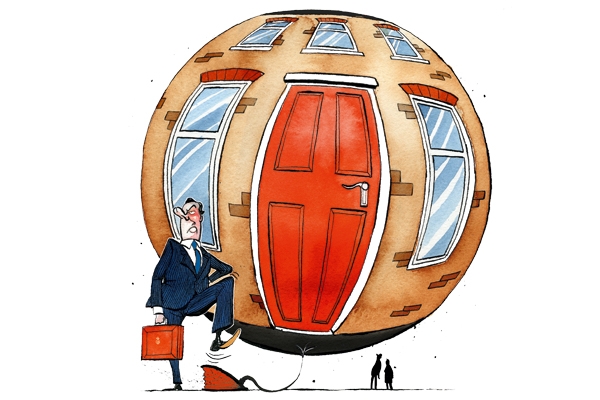So who is talking more nonsense about the housing market: George Osborne or Ed Miliband? From today’s newspapers, it’s hard to tell. The problem: the era of low interest rates has fuelled an asset boom. Perhaps an asset bubble. Property prices are soaring to ridiculous levels, unaffordable for anyone without money in their family. This causes real despair for young people. So what to do?
Ed Miliband’s solution: he’ll ‘harness’ (by which he means ‘divert’) money put into first-time buyer ISAs into housebuilding. This policy could only have been devised by a bunch of academics who don’t understand markets. The whole point of ISAs is that people can invest money wherever they like: why would a responsible Prime Minister encourage people to invest into the crash-prone housing sector? That could destroy their savings. And yes, the government promises to top up the ISA on completion of a house purchase – but what if there isn’t a house purchase? Or would he underwrite these ISAs and have the taxpayer make good the shortfall in the stock market value of house builders? How much would that cost, when the next crash comes?
And most of all, does he really think the shortage of housing in Britain is due to a lack of money in the housebuilding sector? A look in the window of any estate agent will tell him that there’s never been more (borrowed) cash going into that market. And it is feeding through: homebuilding this year will probably exceed its 2007 peak and then expand from there (various forecasts below)

The above graph tells you: this economy may have a lot of problems but a lack of cash in the construction sector isn’t one of them. We’re already running out of bricklayers for the orders placed so far. And yet Miliband pretends he’ll raise £5bn by raiding the ISAs thereby building 125,000 more houses. Both figures plucked out of thin air.
Now enter George Osborne, who wants  to further manipulate the house market via more state subsidises for first-time buyers. He may remember that the US government tried to do ‘promote home-ownership’ via subsidized mortgages. He may also remember how that worked out: a sub-prime crash which led to a global depression. And yet he’s now sounding like a junior George W Bush, saying how his government wants to help young people get on. We have seen this movie before, and know how it ends.
to further manipulate the house market via more state subsidises for first-time buyers. He may remember that the US government tried to do ‘promote home-ownership’ via subsidized mortgages. He may also remember how that worked out: a sub-prime crash which led to a global depression. And yet he’s now sounding like a junior George W Bush, saying how his government wants to help young people get on. We have seen this movie before, and know how it ends.
Osborne says his plans will help a million more people buy a home. Again, a figure plucked out of thin air (but he, at least, admits its an aspiration). The small print of his Budget shows that he is only too aware how the property sector will become ever more unaffordable, and he intends to cash in on that via stamp duty applied to an ever-greater share of homes. He’ll make sure the stamp duty threshold does not rise along with prices, so more and more homebuyers are caught in that net.
Bottom line: crazy UK property prices are the result of the worryingly low interest rates, a problem which (as the below graph shows) may be with us for the rest of the decade. This exacerbates inequality, creates a divide between asset-rich families and asset-free families. The end of bank interest means its harder to bridge this divide through work.
The asset boom is a real problem, and it’s one that Osborne will only exacerbate with his Sub-Prime Mark II and while Miliband makes no impact at all. Again, Miliband reminds us of this essential theory of government: a bizarre idea that you can govern, in an austerity era, by manipulating markets and diverting people’s savings towards your own political priorities.
Low interest rates are a real problem; crazy house prices are the most visible manifestation of this problem. And as both Labour and the Tories show today, it’s a problem which neither of them has the first idea how to address.

[datawrapper chart=”http://static.spectator.co.uk/SGGQ3/index.html”]







Comments